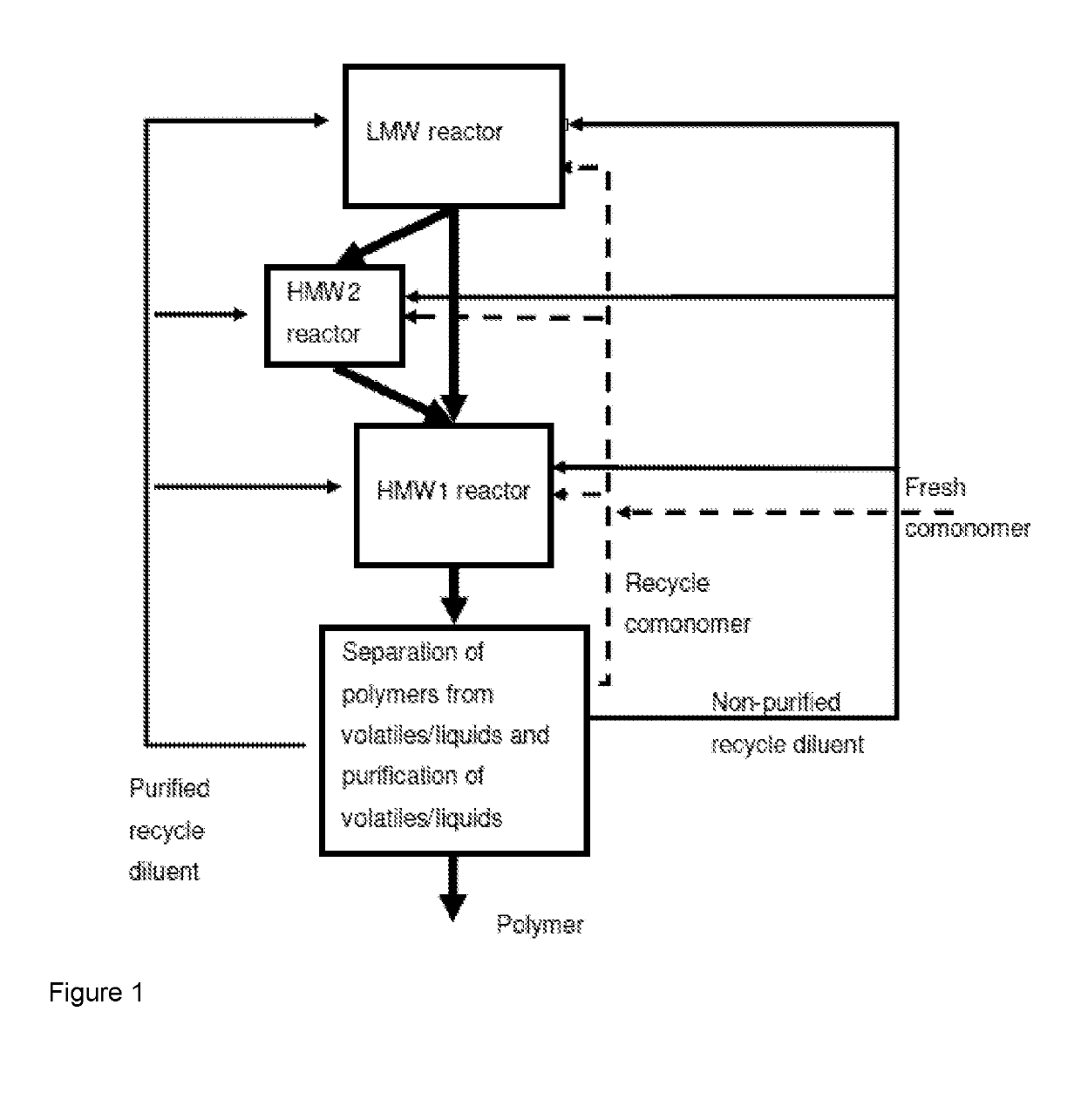Polyethylene for pipes
a technology of polyethylene and pipes, applied in the direction of pipes, flexible pipes, mechanical equipment, etc., can solve the problems no-dig methods, and a high tendency of protruding stones, rocks etc., to scratch the outer surface of the pipe in the longitudinal direction, and achieve the effect of strong localized stress distribution around
- Summary
- Abstract
- Description
- Claims
- Application Information
AI Technical Summary
Benefits of technology
Problems solved by technology
Method used
Image
Examples
examples
Determination Methods for Polymers
[0413]Unless otherwise stated, the following parameters were measured on polymer samples as indicated in the Tables below.
Melt indexes (MFR2 and MFR5) were measured according to ISO 1133 at loads of 2.16 and 5.0 kg respectively. The measurements were at 190° C.
Molecular weights and molecular weight distribution, Mn, Mw and MWD were measured by Gel Permeation Chromatography (GPC) according to the following method: The weight average molecular weight Mw and the molecular weight distribution (MWD=Mw / Mn wherein Mn is the number average molecular weight and Mw is the weight average molecular weight) is measured by a method based on ISO 16014-4:2003. A Waters Alliance GPCV2000 instrument, equipped with refractive index detector and online viscosimeter was used with 1 PLgel GUARD+3 PLgel MIXED-B and 1,2,4-trichlorobenzene (TCB, stabilised with 250 mg / I 2,6-Di tert butyl-4-methyl-phenol) as solvent at 160° C. and at a constant flow rate of 1 ml / min. 206 μl ...
PUM
| Property | Measurement | Unit |
|---|---|---|
| density | aaaaa | aaaaa |
| melting point | aaaaa | aaaaa |
| pressure | aaaaa | aaaaa |
Abstract
Description
Claims
Application Information
 Login to View More
Login to View More - R&D
- Intellectual Property
- Life Sciences
- Materials
- Tech Scout
- Unparalleled Data Quality
- Higher Quality Content
- 60% Fewer Hallucinations
Browse by: Latest US Patents, China's latest patents, Technical Efficacy Thesaurus, Application Domain, Technology Topic, Popular Technical Reports.
© 2025 PatSnap. All rights reserved.Legal|Privacy policy|Modern Slavery Act Transparency Statement|Sitemap|About US| Contact US: help@patsnap.com



